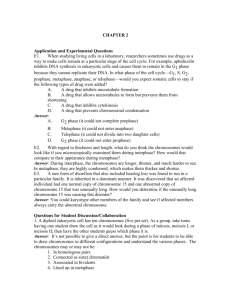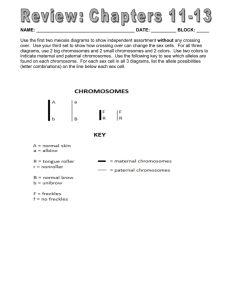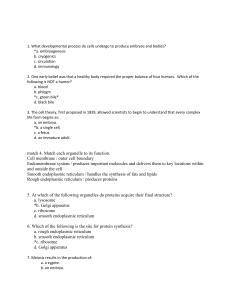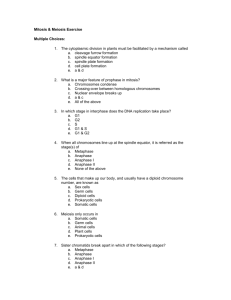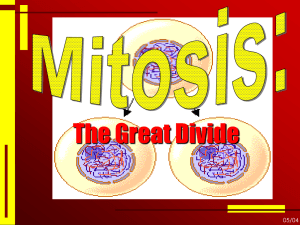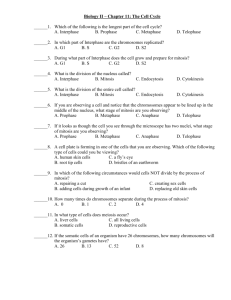File - The Official Website of Eliel Arrey
advertisement
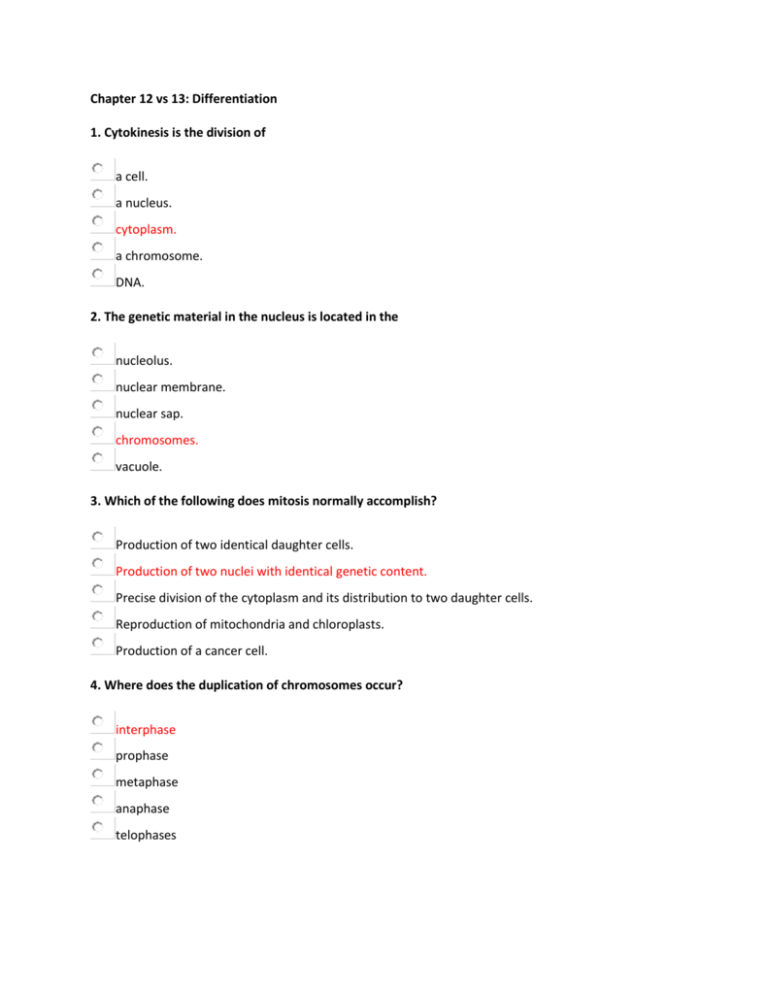
Chapter 12 vs 13: Differentiation 1. Cytokinesis is the division of a cell. a nucleus. cytoplasm. a chromosome. DNA. 2. The genetic material in the nucleus is located in the nucleolus. nuclear membrane. nuclear sap. chromosomes. vacuole. 3. Which of the following does mitosis normally accomplish? Production of two identical daughter cells. Production of two nuclei with identical genetic content. Precise division of the cytoplasm and its distribution to two daughter cells. Reproduction of mitochondria and chloroplasts. Production of a cancer cell. 4. Where does the duplication of chromosomes occur? interphase prophase metaphase anaphase telophases 5. In what phase does the movement of individual chromosomes towards opposite poles occur? interphase prophase metaphase anaphase telophases 6. In what phase does the arrangement of chromosomes along the equator of the cell occur? interphase prophase metaphase anaphase telophases 7. In what phase does the disappearance of nuclear membrane and nucleoli occur? interphase prophase metaphase anaphase telophases 8. In what phase does the DNA become visible strands? interphase prophase metaphase anaphase telophase 9. The two chromatids of a chromosome separate from each other during prophase. metaphase. anaphase. telophases. interphase. 10. Meiosis involves _______ division(s) of a nucleus. one two four eight ten 11. Which of the following are typical of both mitosis and of the first division of meiosis? The genetic material in the nucleus is duplicated prior to division. Spindle fibers form. Two nuclei form as a result of the division. All of the above. None of the above. 12. Which of the following is characteristic of the first division of meiosis but not mitosis? Chromosomes are duplicated prior to division. Nuclear membrane and nucleolus disappear in prophase. Sister chromatids are attached to each other at the centromere. Homologous chromosomes pair. none of the above. 13. Which of the following are ways that meiosis differs from mitosis? In meiosis, the chromosome number is reduced. In meiosis, the daughter cells are genetically different from the parent cell. In meiosis, at least some of the daughter cells differ genetically from each other. All of the above. None of the above. 14. An advantage of sexual reproduction over asexual reproduction is that it allows protection for the offspring. more offspring to be produced. more genetic variation among the offspring. all of the above. none of the above. Questions taken from: http://www.cst.cmich.edu/users/benja1dw/bio101/tools/quiz/mitosis.htm SI website: www.elielarrey.com





